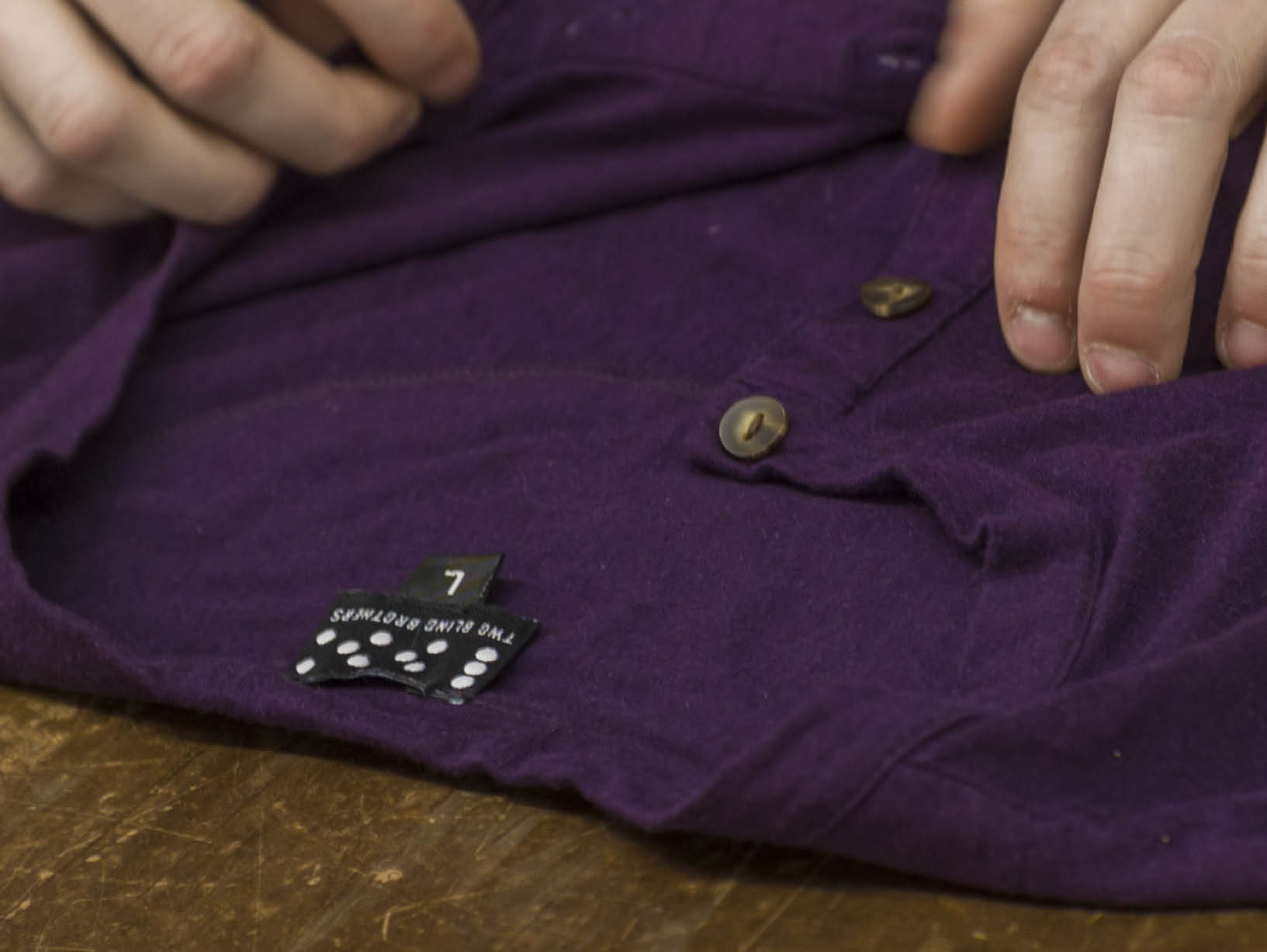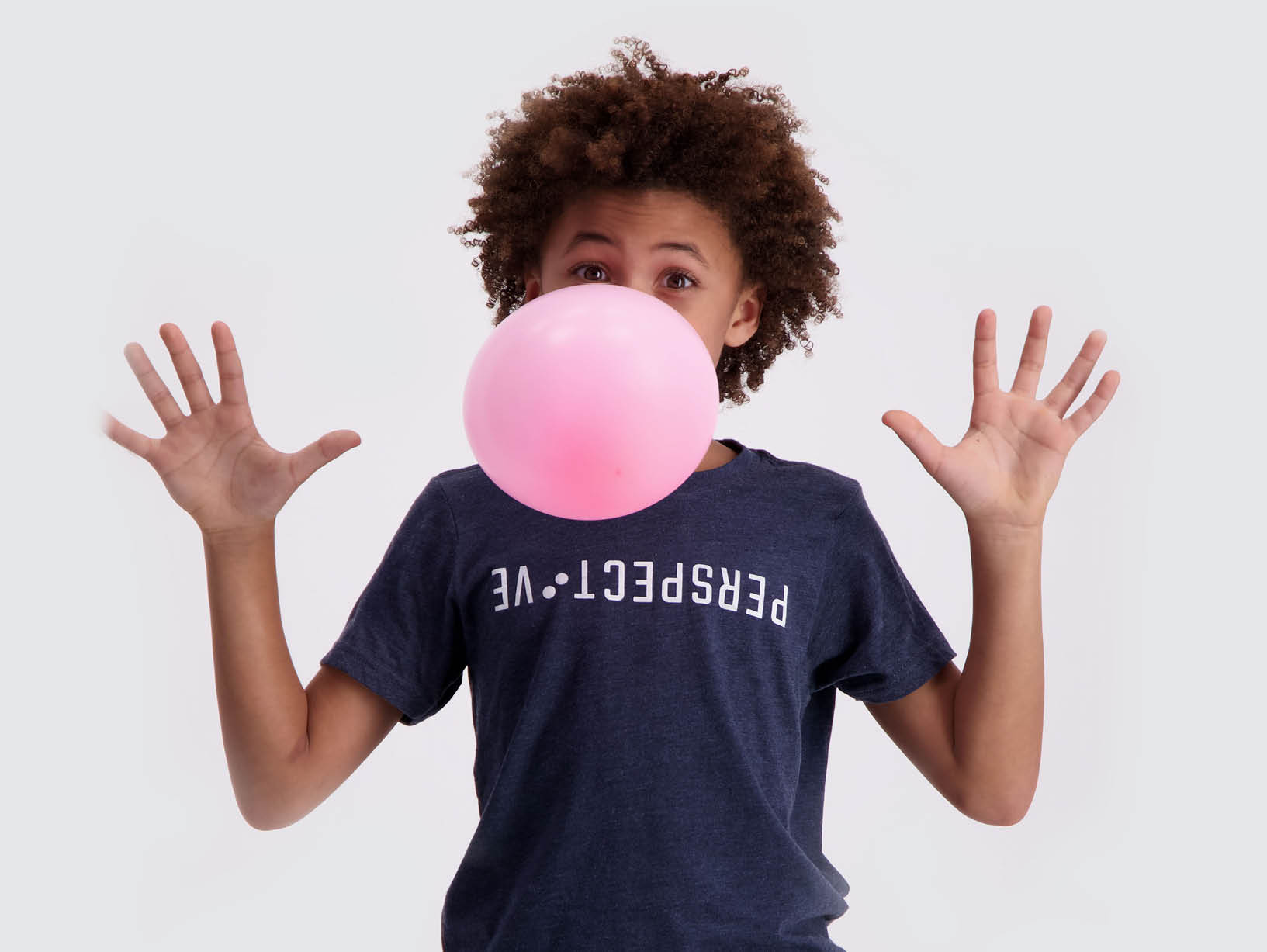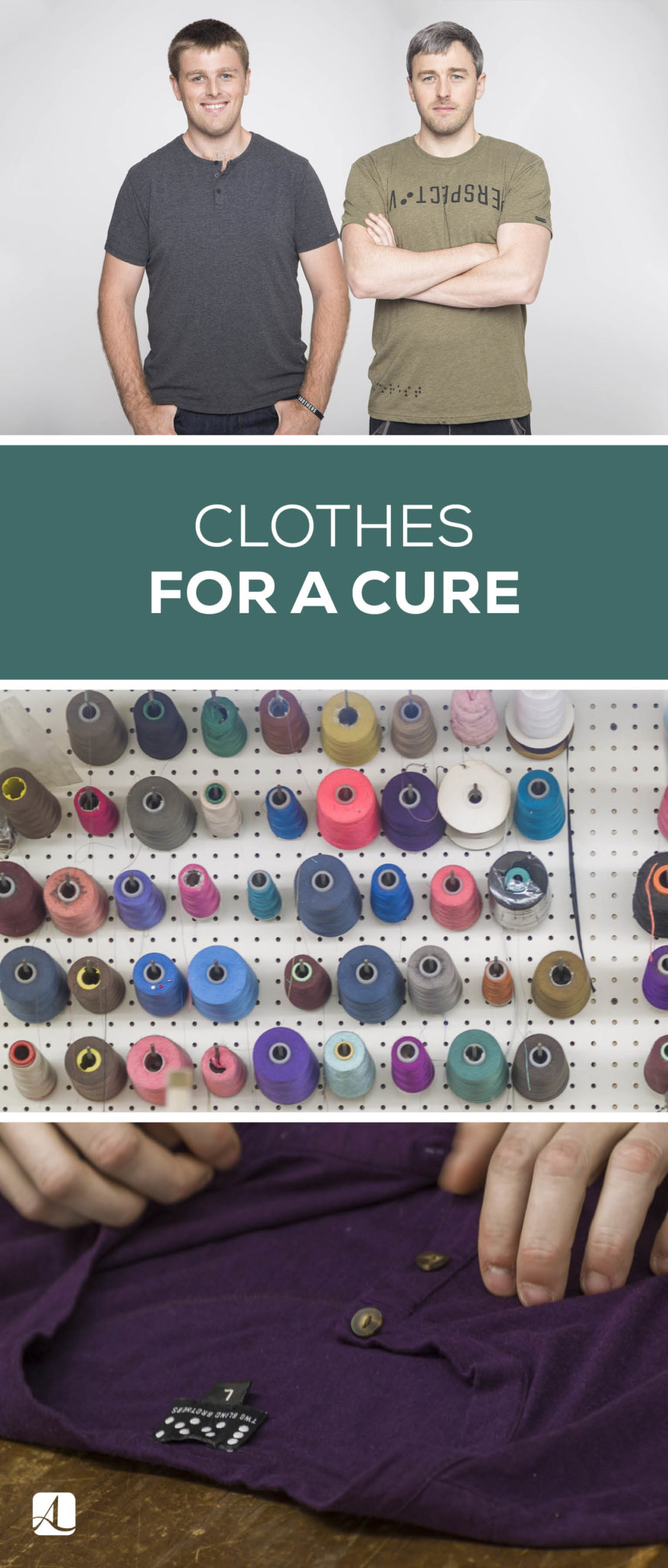Clothes for a Cure
Photography by Two Blind Brothers
Interview with Bradford and Bryan Manning
As children, siblings Bradford and Bryan Manning were diagnosed with Stargardt disease, an eye condition that causes blindness. Undaunted, they forged successful careers before founding Two Blind Brothers, a clothing company that donates 100 percent of its profits to finding a cure for blindness.

Tell us about yourselves. What did you do before Two Blind Brothers?
Bryan: We grew up in Virginia and both graduated from UVA. Brad did investment banking and private equity work in New York. I moved to Boston and then New York, doing sales for big data companies.
Were you diagnosed with Stargardt disease at the same time? How did your parents respond?
Bryan: We were both diagnosed at age seven. I got diagnosed five years after Brad.
Brad: I have a vague memory of when Bryan was diagnosed; part of me was secretly happy to have a companion in this. We’re lucky that our parents never made us feel like we were going to be less capable. We attribute a lot of who we are today to them.
Bryan: As we’ve gotten older, we’ve been able to talk to our parents more candidly about that time. They knew that we were going to pick up on whatever cues they put out, so they told us that, yes, it would be a challenge, but we’d figure it out—secretly, though, they were devastated. But they kept the ship even-keeled throughout the storm.
Our mom also said they would try to guide us into activities and friendships without telling us what we could or couldn’t do. In high school, I played football. Brad got into swimming. Their effort was really important to our development at that age. Now, running a business, a lot of those same skills are necessary: being your own advocate, trying everything you can, working around problems, and adapting to bad situations.
Where did the Two Blind Brothers idea come from?
Brad: It was a serendipitous moment. In 2016, Bryan and I were walking around New York talking about a kid named Yannick Duwe, who had a rare eye condition called Leber congenital amaurosis, which usually causes complete blindness. Yannick was one of the first patients treated in a gene therapy clinical trial, and it reversed his condition. And we’d always been close to the Foundation Fighting Blindness, which had funded some of that trial’s early research.
We went into a clothing store and lost track of each other. If you are visually impaired or blind, shopping can be a pain if you can’t see the sizes, labels, prices, or colors. When we realized we’d bought the exact same shirt, we thought that making such shopping experiences easier could be a fun way for us to make this research field tangible. It didn’t start with a big business aspiration. It was “Let’s do something nice for the Foundation Fighting Blindness” while making shirts that we would like to wear.

When did the business take off?
Brad: When we launched in May 2016 at a Foundation Fighting Blindness event, we had a website and products to sell to that community. A friend who was a part-time videographer did a video on our story, which we put on social media. We suddenly saw some traction and started to get a few local news inquiries.
Then we got some really lucky publicity. We were invited to be on The Ellen DeGeneres Show on January 4, 2017. That led to a windfall of press coverage, including NBC Nightly News two weeks later. By the end of January, we had six months of back orders. We had no employees, other than a part-time assistant. That’s when we invested in adding more people, upgrading the production, and hiring a team to help us build a proper ecommerce website.
Who gets credit for the Shop Blind Challenge?
Bryan: This is going to break my heart. I have to give credit to Brad. [Laughs] Truthfully, when you are blind or visually impaired, trust is so important: you have to trust that the guy who’s crossing the street can see the streetlight and isn’t just walking in traffic, that a cashier is giving you the right change, and that the waiter is giving you a good recommendation.
So we created this “mystery box” concept, where people shopped on our website, not knowing at all what they would receive—they’d have to trust us. We did it for two weeks in 2017 as a Black Friday idea. Its authenticity and uniqueness and, frankly, the fun of the surprise, resulted in such a wonderful response that it’s become a huge part of our business.
Brad: It’s actually around 90 percent of our business during the holidays.

What are some of your other popular items?
Brad: People love our socks. They are super soft, and we have a cool pattern on them around the middle of the foot that looks like a typical dot design, but it’s actually braille artwork that says, “Thanks to you, we are one step closer to finding a cure.”
People also love our main collection items like our hoodies and Henleys. We use this really nice triblend fabric that people often say is the softest item in their closet. Our quality is a principle of our brand, along with research and empowerment—we’ll never sacrifice that. It has helped us stand out as a clothing brand.
Whose idea was it to put braille on your clothing?
Bryan: My wife’s. We were trying to come up with ways for the line to be accessible. The braille on the bottom right-hand hem of most of our garments says the color of the shirt. A woman reached out to us and summed up its importance really well, saying that she could use an app on her phone to tell her the color, but sometimes she just wants to get dressed in the morning without needing help, which made her so happy. It was an awesome moment.
Brad: Bryan and I are greatly impacted by stories like this, which is not something we expected when we first started—but it’s what we get the most enjoyment out of now.
What does perspective mean to you, not just regarding your vision but your outlook on life?
Bryan: Great question. It’s always been one of our biggest struggles because, for example, how do you describe the color blue to somebody who’s never seen it? We have a button on our website that gives you an idea of what it’s like when there’s something missing in the middle of your vision. It shows that you can navigate it, but you have to be a little creative. Personally, I try to be a very positive person because this disease is going to be with me until there’s a cure. How you decide to deal with it can dictate a lot.

Your company’s focus is to find a cure for blindness. Tell us about that business perspective:
Brad: We always say that we’re not the greatest example if you want to make a lot of money because you’d never choose to compete in the clothing business and expect to succeed. Yet, to date, we’ve donated over $750,000 to the Foundation Fighting Blindness. The lesson we learned is that if you have a sincere passion for something, you’ll be surprised at how you find and attract a community that’s equally excited about it.
How do you ultimately define success?
Bryan: When we first started, it was being able to donate money to help early-stage retinal researchers find a cure, and that’s still our top success metric. But we have business goals we try to hit, too—without using outside capital. The third thing that’s become so important is community. The lifeblood of the business is building, maintaining, and empowering the community that we wouldn’t be here without. That is our best success. And if we can inspire others to build businesses like ours—to raise awareness and funds for hearing loss or autism or dementia—that would be the biggest success we could ever hope for.
Brad: And if the parents of a child who’s diagnosed with Stargardt’s sees our content or interviews and it helps them realize that it’s not as bad as they may think, then that’s a huge win for us.
For more info, visit twoblindbrothers.com






















